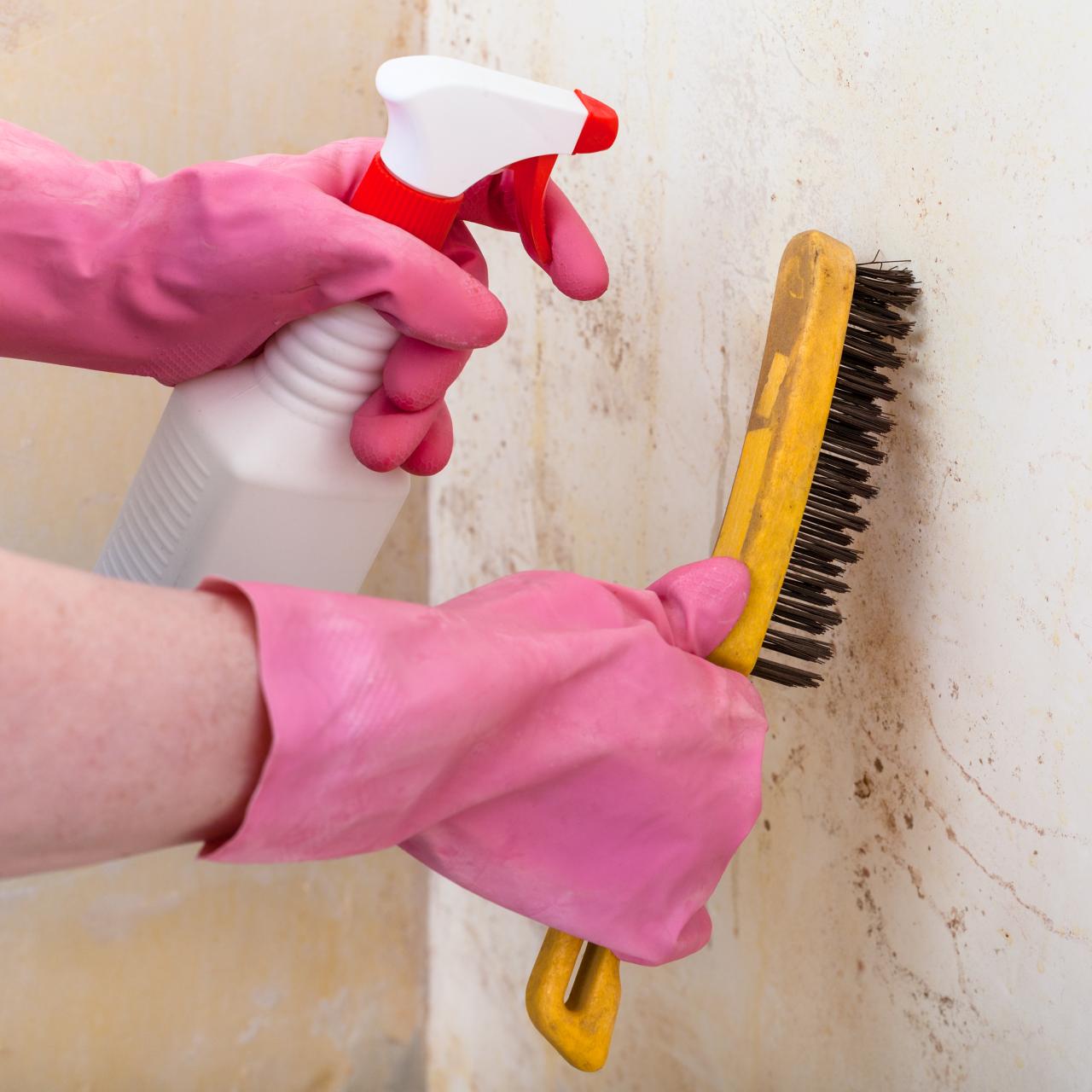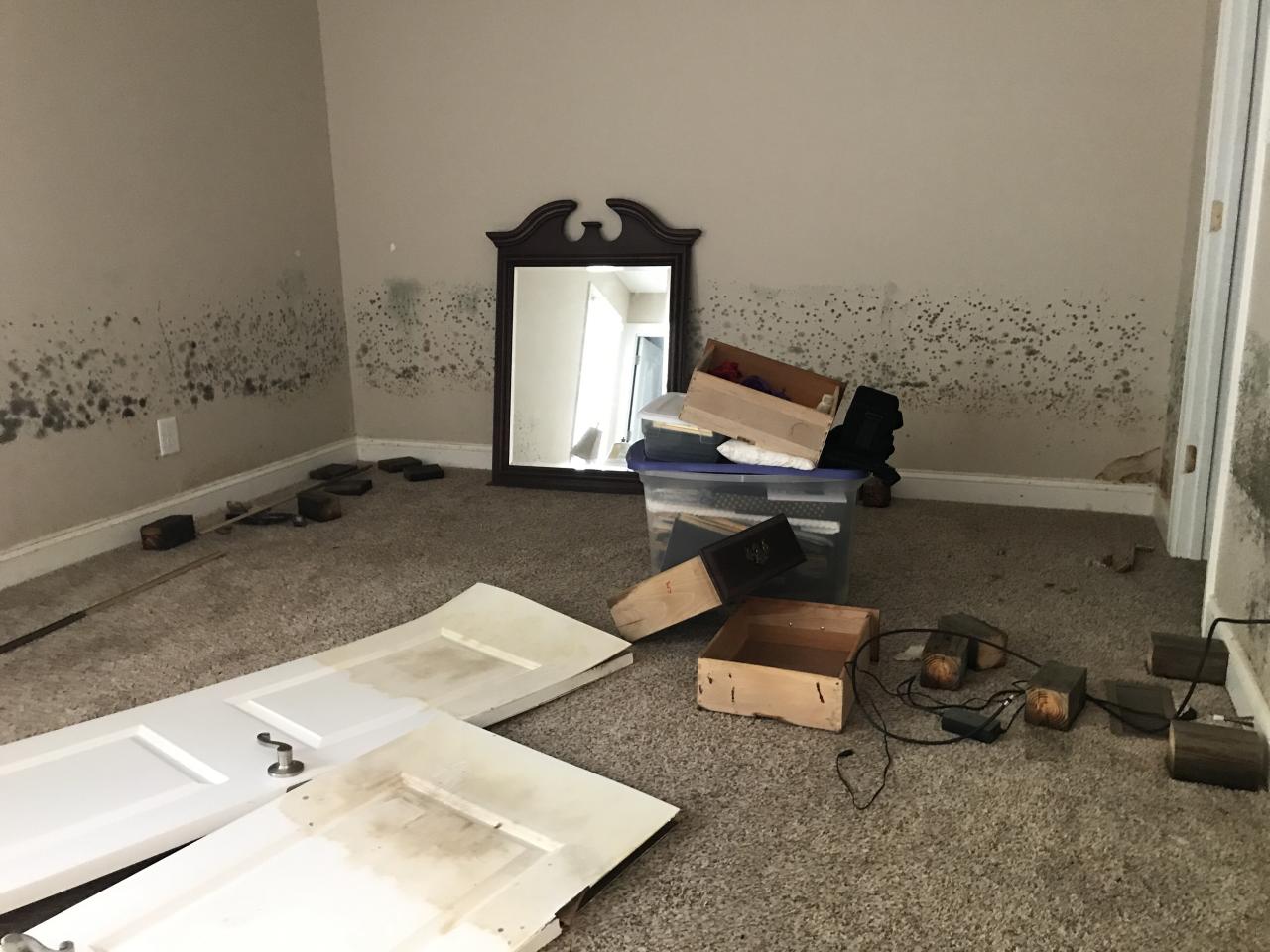Fighting mold
Tips for cleaning up after a flood

Tips for cleaning up after a flood
Health concerns about mold
Mold grows where there is moisture. In the aftermath of storms or floods, materials that are wet for more than 48 hours will have visible and extensive mold growth and should be remediated.
For most people, small amounts of undisturbed mold are not a major health hazard. There are no regulatory limits for exposure to indoor mold, but there is evidence that widespread mold (and mold spores) can have harmful effects. Those most at risk include: infants and children; elderly people; pregnant people; and individuals with respiratory conditions, allergies (including asthma), or weakened immune systems. Mold-abatement workers are also at higher risk. A well-planned remediation is key to addressing these concerns.
Removing mold
It is important to consider whether to attempt your own mold remediation or hire a mold-abatement expert. Here are some of the factors to evaluate.
Isolate the mold
First, minimize your exposure to mold by isolating the affected area, if possible. This can be done by sealing off doorways with plastic and covering other openings and air ducts.
Clean it or throw It away?
Non-porous surfaces, such as metals, glass, and hard plastics, can usually be cleaned.
Semi-porous and porous structural materials, such as wood and concrete, can usually be cleaned if they are structurally sound.
Porous materials, such as ceiling tiles, insulation, and wallboards with extensive mold should be discarded. Some experts say that you should discard porous materials with more than 10 square feet of mold. Others say that you need to discard the materials only if there is more than 100 square feet of mold. If wallboard is removed, be sure to go at least six inches beyond visible mold.
Using a mold-abatement expert?
There are no official state or local licenses or certifications specifically for mold-abatement experts. However, all businesses in New York must be registered to do business in the state. The following information will assist you in checking the legitimacy and the complaint history of a company you are considering hiring:
Check licenses
Companies that market themselves as “home-improvement contractors” must be licensed in New York City, Suffolk, Nassau, Westchester, Putnam, and Rockland counties, and in the City of Buffalo.
New York City Department of Consumer Affairs
“311”
Nassau County Office of Consumer Affairs
516-571-2600 (press option 1)
nassaucountyny.gov/1547/Consumer-Affairs
Suffolk County Office of Consumer Affairs
631-853-4600 (press option 3)
suffolkcountyny.gov
Westchester Dept. of Consumer Protection
914-995-2155
consumer.westchestergov.com
Putnam County Dept. of Consumer Protection
845-808-1617
putnamcountyny.com/consumer-affairs/
Rockland County Dept. of Consumer Protection
845-708-7600
rocklandgov.com/departments/consumer-protection-weights-and-measures/
City of Buffalo
716-851-4078 or 716-851-6594
data.buffalony.gov/Economic-Neighborhood-Development/Licensed-Contractors/264u-ukjs/about_data

Make sure companies are registered to do business in the state. Even if you are not using a licensed home-improvement contractor, the business must still be registered with the New York State Secretary of State.
To contact the New York State Secretary of State
Find out if there have been any complaints lodged against the contractor or business by contacting all of the agencies listed above. In addition, you can contact the Better Business Bureau.
Ask for all Material Safety Data Sheets (MSDSs). These will give you important information about any chemicals they plan to use.
Obtain a written contract for all work to be done and costs to be incurred. New York state law requires a “home-improvement contractor” to provide a written contract for home-improvement work specifying the scope of the work to be performed, the cost, and a notice that the consumer may cancel the contract within three business days, as well as other mandatory disclosures.
Get references and check them. Ask friends and neighbors. Get references from the contractor and speak directly to former customers. Check for complaints with the Better Business Bureau.
Commonly used cleaning methods
There are no industry standards or consensus about any particular method to clean mold. Most frequently, it is recommended that the mold be removed by grinding and scraping with a stiff brush, then vacuuming with a high-efficiency particulate air (HEPA) vacuum, followed by one of the following:
- wiping with a detergent solution
- wiping with a bleach solution
- sealing with a borate solution (requires certified pesticide applicator)
- sealing with another type of primer, such as a latex paint
With all methods, follow these guidelines
Use the gentlest cleaning method that effectively removes the mold. A large percentage of mold can be removed using a vacuum equipped with a HEPA filter. Disinfectants are seldom needed to perform an effective remediation (unless there is also a sewage problem). The use of gaseous, vapor-phase, or aerosolized (e.g. fogging) biocides are not usually recommended by environmental or public health agencies.
Follow label instructions when using cleaning materials, including proper protection and ventilation. If you choose to remediate without the assistance of a mold-abatement expert, take precautions to protect yourself from exposure during cleaning by wearing respiratory protection, gloves, and goggles.
Make efforts to eliminate dust generation.
Make sure that all materials are completely dry and visibly free from mold after remediation is completed and before beginning any rebuilding efforts. Give consideration to cleaning areas adjacent to visible mold to remove settled spores and mold.
Office of the New York State Attorney General
Environmental Protection Bureau
1-800-771-7755
U.S. Environmental Protection Agency
Learn About Mold
epa.gov/mold/learn-about-mold
U.S. EPA, Office of Radiation and Indoor Air Indoor Environments Division
1200 Pennsylvania Avenue, NW
Mail Code 6609T
Washington DC 20460
New York State Department of Health
Mold and Your Home: What You Need to Know
health.ny.gov/publications/7287
btsa@health.ny.gov
518-402-7800
NYC Department of Health & Mental Hygiene Report
Guidelines on Assessment and Remediation of Fungi in Indoor Environments
nyc.gov/assets/doh/downloads/pdf/epi/epi-mold-guidelines.pdf
New York City Department of Health
Health Topics: Mold
nyc.gov/site/doh/health/health-topics/mold.page
Mold
https://www1.nyc.gov/site/doh/health/health-topics/mold.page
1-800-232-4636
Cornell University College of Human Ecology, Hiring a Mold Remediation Contractor
https://ccetompkins.org/resources/hiring-a-mold-remediation-contractor
American Industrial Hygiene Association
Mold Resource Center
aiha.org/public-resources/consumer-resources/disaster-response-resource-center/mold-resource-center
3141 Fairview Park Drive, Suite 777
Falls Church VA 22042
703-849-8888
